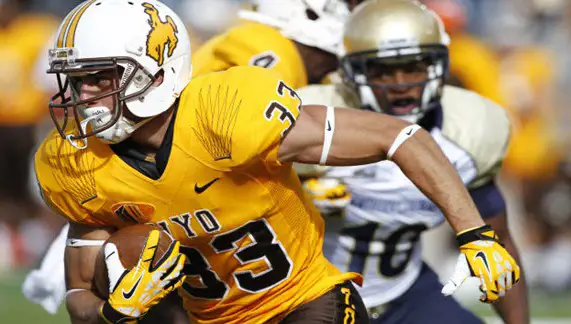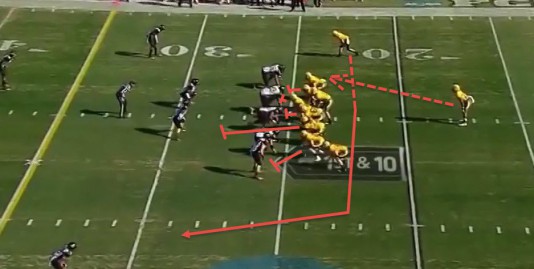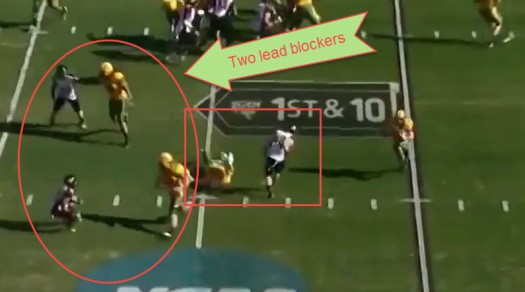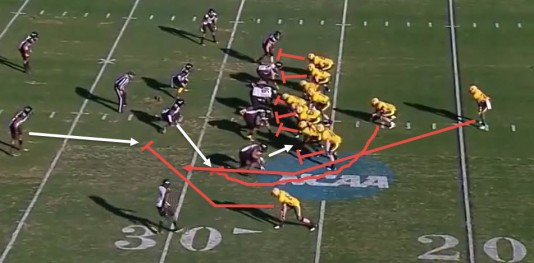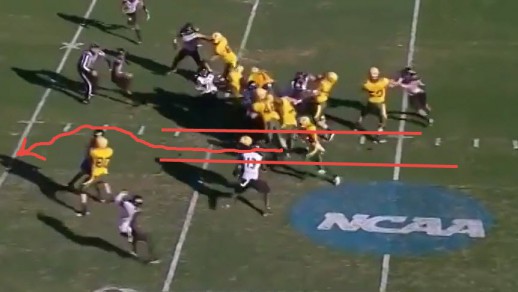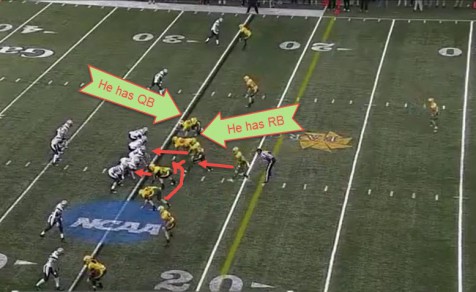OK, so maybe this game isn’t quite the magnitude of the game last week’s. That game registered as a 9.0 on the Richter Scale, while this one will probably measure more like a 3.0. This doesn’t change anything, though. Just as with South Dakota, Oregon can’t have a hangover from last week or look ahead to next week, when they open Pac-12 play against Wazzu in the Palouse. Once again, Oregon can’t get lulled to sleep by the non-Power-5 team on the other sideline. Why? Wyoming could be very dangerous this year, for a number of reasons.
The Cowboys have a new, highly decorated coach. Craig Bohl decided to come to Wyoming from North Dakota State, where he won three straight Football Championship Subdivision championships and amassed a record of 104-32 over the past 11 years.
Bohl is just what the ‘boys needed — a coach who knows how to build a team and win games consistently. He has decided to scrap the entire Wyoming defensive and offensive playbooks from last year and bring his playbooks from ND State. So, in order to learn about this year’s Wyoming team, we are going to have to look at the Bison team of last year.
Bohl is going to run a pro-style offense, but there may be a few alterations, due to the fact that Wyoming doesn’t have a prototypical fullback or a big tight end. Often though, he likes to add in a fly back to throw off the defense. A fly back is a quick receiver or a running back lined up in the slot, who, before the snap, is sent in motion from one side of the formation to the other.
In the above screenshot, you can see that the North Dakota State quarterback sends the fly back in motion. Once the fly back is right behind the quarterback, the ball is snapped, and the quarterback hands the ball off to the fly back, initiating this play known as a fly sweep.
As the ball is handed off, the offensive line is going to employ a man blocking scheme with the tight end kicking the right outside linebacker to the outside in order to create a hole for the fly back to run through. Once the fly back gets the ball, he finds the hole created by the tight end and the left tackle and bursts through for, in this case, a 16-yard gain and a great first play of the game.
Later in the same game, in the third quarter, North Dakota State runs power. The Bison come out in an I-formation, with a tight end in the wing on the left, and the defense lines up in a 4-3 under, as seen in the screenshot above. At the snap, the right guard pulls and blocks the right defensive end, while everyone else blocks the player in front of them.
At the same time, the fullback is going to block the middle linebacker out to create a hole between himself and the tight end (above), similar to what they did on the fly sweep. There’s not much to this play, it is just a standard power run, but this is a staple run play for the Bison, just as it is for Stanford and many NFL teams.
Now that we have the offense down, let’s look at how Wyoming may try and stop Oregon’s vaunted zone read. To demonstrate, I am going to show you a play from North Dakota State’s game against New Hampshire.
As seen above, at the snap, the strong safety has walked up into “the box” (an imaginary box that is within five yards of the line of scrimmage), and the middle linebacker is at the LOS, showing blitz. Once the ball is snapped, the left defensive tackle stunts with the left defensive end, and the middle linebacker blitzes, taking on the center.
If you don’t know what a stunt is, it’s when a defensive player rushes to his left or right instead of straight forward, and then the player next to the defender does the opposite to crisscross, with the goal of confusing the offensive linemen trying to block them. Stunting was a technique used often by Coach Bohl at North Dakota State, so I’d imagine that he is going to continue to use it liberally throughout this season at Wyoming, including Saturday against the Ducks.
With the Bison bringing an extra man (the middle linebacker) on a blitz, there are two defenders left unblocked (screenshot, above) instead of the usual unblocked open defender. This sets the defense up for an easy tackle-for-loss.
In addition, the strong safety walked up before the snap, so he is right there to make the play if the ball carrier gets past the defensive line. The weakness in this defense, though, is the fact that there are four receivers and five players covering them. This means at least three receivers have one-on-one coverage. If Wyoming employs this defensive tactic this weekend, I can guarantee you that Mariota and Co. will take advantage of this. So, don’t be surprised if the strong safety who is usually in the box ends up staying in coverage on Saturday.
To conclude, yes, Wyoming is no Michigan State. Nobody is saying the team has that resemblance. But Oregon just can’t take the Cowboys too lightly. Don’t count out Bohl and his new team … Bohl knows how to win.
“Oh, how we love to learn about our opponents on FishDuck.com.”
Rory Davidson
Opponent Football Analyst for CFFNetwork/FishDuck.com
Eugene, Oregon
Top photo by Uniform Critics
Related Articles:
Chip Kelly Update: Everything's Good Again ...
Chip Kelly Update: Wailing and Gnashing of Teeth
Shock and Awe -- The Oregon Ducks' Football Hangover Effect
Despite Lopsided Score, Georgia State "Never Stopped Believing"
Hope Springs Eternal for Ducks
Incompetent Pac-12 Officials: How Do You Miss ALL of THIS?
Rory Davidson: Rory (Football Analyst) is a sophomore at Oregon in the fall (Class of 2018). He has been a devout Stanford football fan since he was 2 months old and is excited about the energy and greatness Oregon sports has to offer. For the past 6 years he has been doing advanced data analytics for his high school football team and working alongside the coaches to understand how they strategize about the game. He wants to integrate more statistics into his analyses and try to help readers learn about and understand the future of sports.

